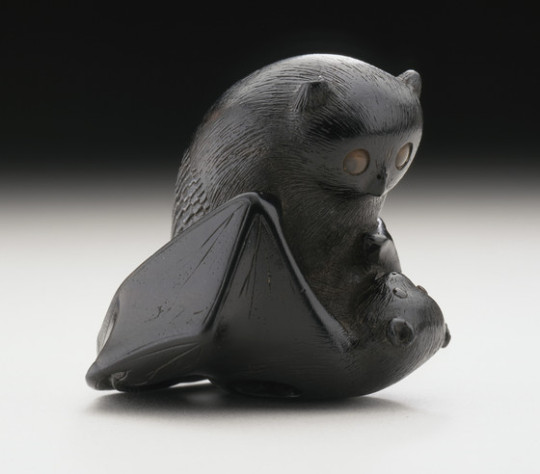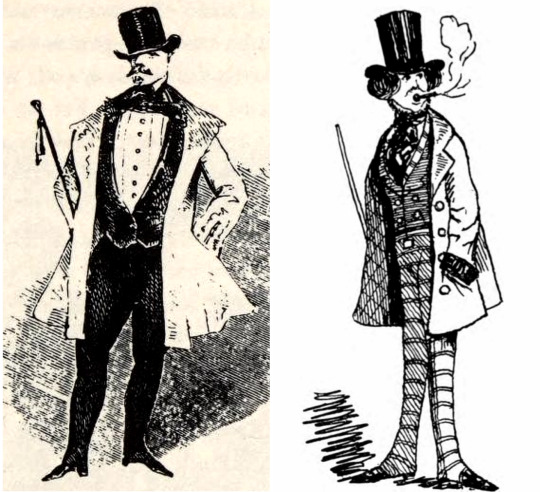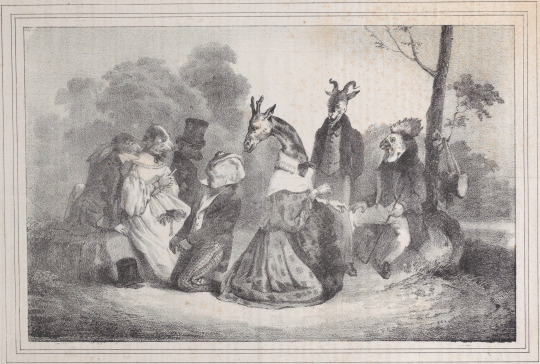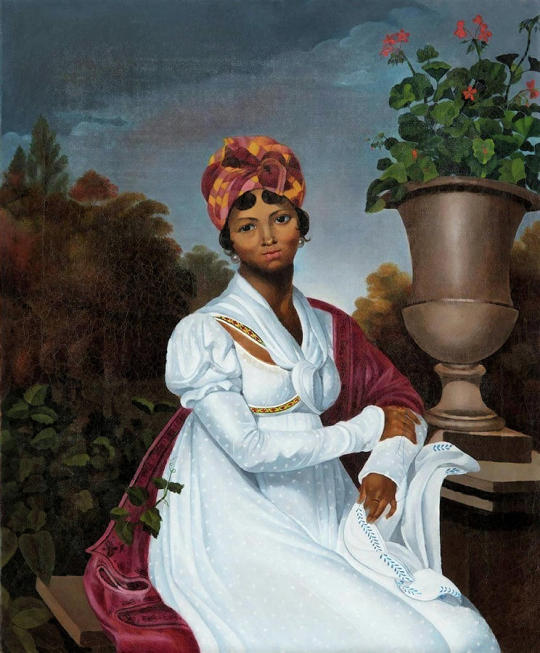#early - mid 19th century
Explore tagged Tumblr posts
Text

Owl Attacking a Bat, Horaku, Japanese, Early to Mid 19th Century
From the Los Angeles County Museum of Art
#owl attacking a bat#owl#bat#carving#sculpture#statuette#japanese#horaku#early 19th century#mid 19th century#19th century#1800s#art#history
3K notes
·
View notes
Text


Ship's medicine chest, early 19th century
This chest belonged to Robert Jillett, pioneer whaler, Kāpiti, New Zealand, 1836-1845. It was supplied by the Apothecary's Hall, London, and replenished at Hobart Town, Tasmania.
#naval artifacts#medicine chest#surgeons at sea#whaler#new zealand#early 19th century#mid 19th century#age of sail
4K notes
·
View notes
Text

submitted by @asterroth 💚🤍
#oooooooo archery dresses!#that’s a new one for the blog!#very exciting ☺️☺️#historical fashion poll submission#historical fashion polls#fashion poll#historical dress#historical fashion#dress history#fashion history#fashion plate#19th century#19th century fashion#19th century dress#early 19th century#mid 19th century#1830s fashion#1830s dress#1830s#1831#skirt
377 notes
·
View notes
Photo

Grodental wooden doll with tuck comb, early-mid 19th century, possibly 1830s
814 notes
·
View notes
Text

At left, the type of 1840s man that many people want, looking dashing in his evening costume and with the fashionable barrel chest and defined waist of his breed.
At right, a more typical example of the 1840s man that you will find at discount prices: note the striped trousers, huge paletot coat, and cigar.
This is the difference that proper vetting of your 19th century man can make! Of course, many people are happy with the Gent on the right and will gladly indulge his fashion habits and smoking.
#is the 19th century man okay#mid 19th century#1840s#archibald henning#punch magazine#victorian#early victorian era#fashion#class#gents
177 notes
·
View notes
Text

Young man, his right arm around the shoulders of a relative. (c.1842-1855)
via gallica.bnf.fr
#old photo#early photography#antique photo#antique photography#vintage photograph#vintage photography#victorian photography#victorian photo#historical photography#victorian era#victorian#mid 19th century#1840s#1850s#early victorian#e
26 notes
·
View notes
Text
Renegade Nell POTC crossover when
#sorry this is self indulgent#but potc is my special interest currently and i love renegade nell sm#okay lets have a look: both are disney#both are fantasy and utilise real life legends and mythology relevent to their time period and location#and even though renegade nell is set late 17th to early 18th century while pirates is mid 18th to early 19th I'm like#a crossover SHOULD happen#it would WORK#renegade nell#potc#pirates of the carribbean#polly honeycombe#nell jackson#isambard tulley#charles devereux#jack sparrow#davy jones#calypso#tia dalma#billy blind
24 notes
·
View notes
Photo

PÉNITENCE Un baiser á la Capucine. Ecole de Médecine. Grisettes et Etudians. designed by J. J. Grandville and lithographed by Auguste Desperret. Paris, France, ca. 1834
#I think the english translation of the caption is:#PENANCE A kiss to the Nasturtium. School of Medicine. Grisettes and Students.#Nasturtium is a common name for a genus of flowering plants called Tropaeolum#Grisette is a word for a working class french woman that was used from the late 17th to early 20th century#but the meaning changed over time#The 1835 edition of the Dictionnaire de l'Académie française defined grisette as a young working woman who is coquettish and flirtatious#I've also read that in the mid 19th century a grisette was a young independent french woman#who liked intellectualism and the arts. and spent time around artists especially of the bohemian subculture in paris#anyways I hope the furries like this one#anthropomorphic animals#giraffes#frogs#roosters#dogs#rabbits#is that a goat and a bear idk#animals#Jean Ignace Isidore Gérard Grandville#Grandville#Auguste Desperret#prints#lithographs#lithography#Paris#France#Europe#July Monarchy
29 notes
·
View notes
Text
Wife made some beef strokin-off for dinner, or whatever it's called. I think she said it was imported from Russia? I dunno, either way it tasted good and I'm reminded why I'm so lucky to have such a wonderful woman in my life and a... somewhat acceptin family of hers
#//i actually had stroganoff for dinner tonight so i felt like making this post as a joke#this is also time accurate as stroganoff was founded early 1800's mid 19th century- so it works!#you enjoy that stroking off Colt
2 notes
·
View notes
Text

Okay what next

#this loom is from prooobably late 18th/early 19th century#and was used in someone's home#idk about other places but where I live people wove at home - even on big looms - until the mid to late 19th century#by which time the factories had gotten big enough that a lot of people worked there instead#'people didn't really weave at home in the 18th century' they absolutely did??????????#anyway this specific loom is in the museum where i work#we have a whole room full of them#this one's the oldest#the newest ones are big noisy electric ones#it's a very cool room but very loud and the coworker there mumbles a lot#and likes to leave the machines running while explaining things#he just told me a whole story about this loom and i caught maybe 30% of it
160K notes
·
View notes
Text

City of Paris building - It was 1850 when the Verdier brothers, immigrants from France, opened a store aboard the ship La Ville de Paris to serve the Argonauts passing through San Francisco's harbor. In 1896 the business, which stayed in the family for over a century and a quarter, moved into a new building designed by architect Clinton Day, damaged by the 1906 earthquake, its interior was reconstructed by architects John Bakewell and Arthur J. Brown. The old City of Paris building was one of the finest examples of the beaux-arts style of commercial building in California.
Photo by Mark Heringer, 2011
#naval art#naval artifacts#city of paris building#mid 19th century#early 20th century#age of sail#age of steam#galleon
181 notes
·
View notes
Text

submitted by @edwardian-girl-next-door 💛🤎
#historical fashion poll submission#historical fashion polls#fashion poll#historical dress#historical fashion#dress history#fashion history#fashion plate#19th century#19th century fashion#19th century dress#early 19th century#mid 19th century#1830s fashion#1830s dress#1830s#1836#trousers
108 notes
·
View notes
Text

"La Martiniquaise", early to mid 19th century
88 notes
·
View notes
Text
also Thoreau wasn't "in the woods" the way most people think of it
Walden Pond was a popular recreation area, and still is. skating in the winter, boating and swimming in the summer, hiking or simply walking all times of the year. it's like two miles from central Concord, Massachusetts
Thoreau basically went to the local park to "live deliberately" and I feel like that is also relevant
I hate the “Thoreau’s mom did his laundry” criticism so much, it drives me crazy.
Henry Thoreau did not go to Walden Pond because he thought it would be a fun adventure. He went into the woods because he was deeply depressed and burnt out. He was running from the horror of his brother and best friend recently dying in his arms, and the haunting memory of causing the Fairhaven Bay fire. His friend Ellery Channing literally gave him the ultimatum of either taking some time off to write and think, or else be institutionalized.
I think Thoreau’s mother saw her depressed son choosing to retreat into a small cabin in the woods, and was worried about him. Of course she did his laundry - just as Ralph Waldo Emerson probably brought him firewood and bread. These were not chores of obligation to support a “great” man, but services of love to help their deeply depressed 28yo son and friend.
And if you ask me, there’s a lesson in that - to “suck out the marrow of life” and “live deliberately,” one must also accept help offered from the people in your life who love you. There is no true transcendentalism or individualism without love and friendship behind it.
#I have friends who learned to swim in Walden Pond. with their floaties and brightly-colored plastic pool toys#in the early 2000s#and it was like that in the mid-19th century as well#he was not In The Wilderness by any means. he just wasn't in the middle of town#long post
33K notes
·
View notes
Text
PSA to all historical fiction/fantasy writers:
A SEAMSTRESS, in a historical sense, is someone whose job is sewing. Just sewing. The main skill involved here is going to be putting the needle into an out of the fabric. They’re usually considered unskilled workers, because everyone can sew, right? (Note: yes, just about everyone could sew historically. And I mean everyone.) They’re usually going to be making either clothes that aren’t fitted (like shirts or shifts or petticoats) or things more along the lines of linens (bedsheets, handkerchiefs, napkins, ect.). Now, a decent number of people would make these things at home, especially in more rural areas, since they don’t take a ton of practice, but they’re also often available ready-made so it’s not an uncommon job. Nowadays it just means someone whose job is to sew things in general, but this was not the case historically. Calling a dressmaker a seamstress would be like asking a portrait painter to paint your house
A DRESSMAKER (or mantua maker before the early 1800s) makes clothing though the skill of draping (which is when you don’t use as many patterns and more drape the fabric over the person’s body to fit it and pin from there (although they did start using more patterns in the early 19th century). They’re usually going to work exclusively for women, since menswear is rarely made through this method (could be different in a fantasy world though). Sometimes you also see them called “gown makers”, especially if they were men (like tailors advertising that that could do both. Mantua-maker was a very feminized term, like seamstress. You wouldn’t really call a man that historically). This is a pretty new trade; it only really sprung up in the later 1600s, when the mantua dress came into fashion (hence the name).
TAILORS make clothing by using the method of patterning: they take measurements and use those measurements to draw out a 2D pattern that is then sewed up into the 3D item of clothing (unlike the dressmakers, who drape the item as a 3D piece of clothing originally). They usually did menswear, but also plenty of pieces of womenswear, especially things made similarly to menswear: riding habits, overcoats, the like. Before the dressmaking trade split off (for very interesting reason I suggest looking into. Basically new fashion required new methods that tailors thought were beneath them), tailors made everyone’s clothes. And also it was not uncommon for them to alter clothes (dressmakers did this too). Staymakers are a sort of subsect of tailors that made corsets or stays (which are made with tailoring methods but most of the time in urban areas a staymaker could find enough work so just do stays, although most tailors could and would make them).
Tailors and dressmakers are both skilled workers. Those aren’t skills that most people could do at home. Fitted things like dresses and jackets and things would probably be made professionally and for the wearer even by the working class (with some exceptions of course). Making all clothes at home didn’t really become a thing until the mid Victorian era.
And then of course there are other trades that involve the skill of sewing, such as millinery (not just hats, historically they did all kinds of women’s accessories), trimming for hatmaking (putting on the hat and and binding and things), glovemaking (self explanatory) and such.
TLDR: seamstress, dressmaker, and tailor are three very different jobs with different skills and levels of prestige. Don’t use them interchangeably and for the love of all that is holy please don’t call someone a seamstress when they’re a dressmaker
#sewing#historical sewing#sewing knowledge#writing guide#PSA to writers#historical fiction#fantasy writing
19K notes
·
View notes
Text
Vibrating at the idea of maybe one day living in an old industry workers neighbourhood
#ent talks#architecturally just right for me. and urbanistically efficient when done right.#there was so many things wrong with big industrial regions but im grabbing the early cités ouvrières so tightly#the later (early 20th century) cités jardins usually fill me with rage or disappointment#but the early ones? if i can get myself to plan and budget for insulation and repairs#my dream is to get one of the small mid 19th century houses#the yearning is real
0 notes